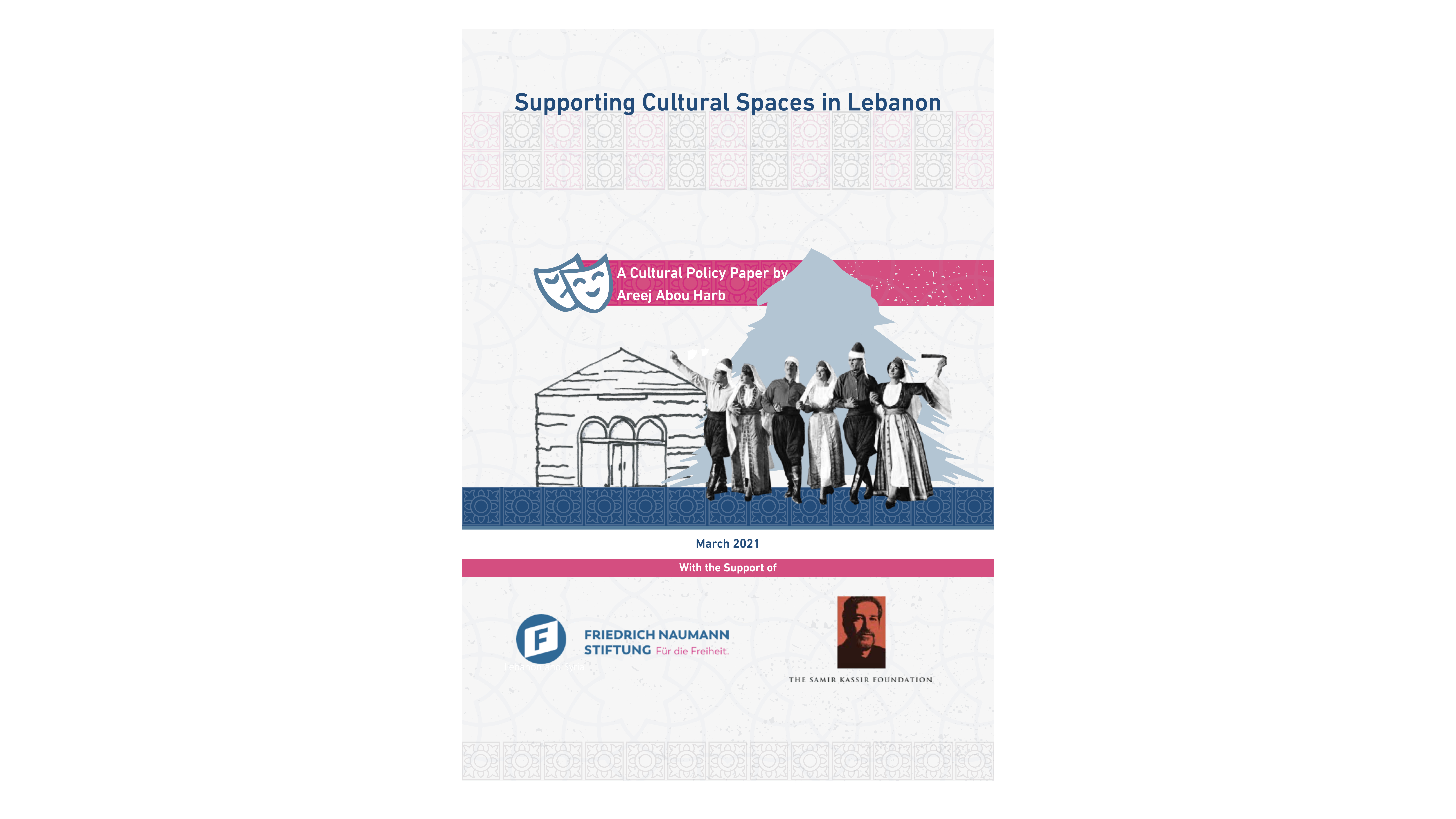Policy Paper
Supporting Cultural Spaces in Lebanon

A cultural policy paper by Areej Abou Harb
Since the proclamation of the State of Greater Lebanon in 1920, its stages of growth and turmoil can be categorized roughly into 15 to 20 year periods. In 1943, Lebanon acquired its independence. In 1960, the Lebanese economy flourished, and the country witnessed the rise of its financial and cultural golden age. The year 1975 marked the beginning of the Lebanese civil war which would persist for 15 years. The following decade and a half was an age of reconstruction and growth, halted suddenly in 2005 by the assassination of former Prime Minister Rafik Hariri. This initiated a spate of killings, thereby ushering in an era of instability. Lebanon currently grapples with dire inflation and a crumbling economy. The country’s economy collapsed in 2020.
The aim of this report is not to delve into the causes of these historical events, nor is it an analysis of their political and historical impact. This report aims to contextualize these events and assess their effects on the Lebanese cultural sector. The purpose is to reflect on public policy related to culture, so as to further understand Lebanon’s trajectory and improve its potential.
This paper aims to provide cultural recommendations for Lebanon during this critical moment in its history. Engaging in a collective reflection would enable a thoughtful implementation of new cultural policies over the next few years. These proposals will be backed by legal considerations which are imperative in tackling policy change in general.
After the civil war (1975-1990) in Lebanon, an attempt to enhance the cultural sector emerged: several private initiatives promoted the creation of cultural spaces, while artistic works increased in Beirut, as well as other regions. Human capital played a major role in post-war cultural development, particularly individuals who acquired education and experience abroad during the war. Cultural initiatives rose, which led to the establishment of cultural associations. In post war Lebanon, cultural entities were primarily funded by private sources. The state institutions entrusted with the cultural sector, specifically the Ministry of Culture, accounted for a scarce percentage of financial support.
This paper outlines the most important challenges facing the cultural sector and a series of recommendations to support the recovery of cultural spaces in Lebanon.